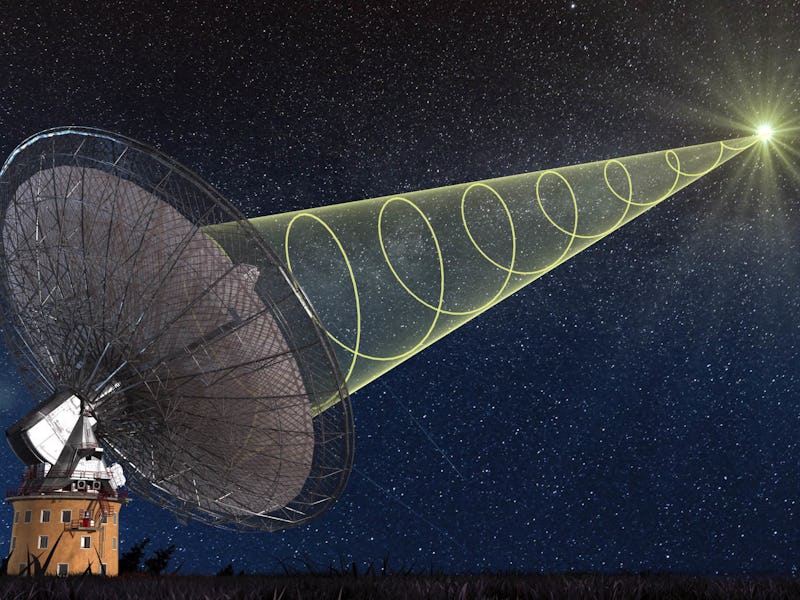Mysterious Flashes of Light Help Scientists Map the Universe
FRBs with a side of gamma rays, coming right up!

A class of mysterious radio waves blasting from space may be more powerful than anyone expected. Called fast radio bursts, or FRBs, they’ve been a perpetual source of confusion for astronomers, who have no clue from where they originate, or how and why they are created. Nevertheless, they still have some usefulness: scientists just detected another FRB coming from deep space, and it’s the brightest one yet. In another first, astronomers have observed one of these enigmatic blasts occurring together with a pack of gamma rays. This means they could have the same source, and it could be a billion times more energetic than previously predicted.
FRBs are high-intensity radio signals, which race through the universe at incredible speeds. The signals are brief, lasting only a few milliseconds each — which makes them extremely difficult to detect and pinpoint. The first FRB was observed in 2001, and since then astronomers have only detected 17. With limited information, all we seem to know is that they originate from outside the Milky Way.
Even though less than 20 examples have been detected, astronomers believe thousands of these puzzling flashes illuminate the cosmos on a daily basis. Some experts think colliding neutron stars could be the driving force behind these mysterious blasts, and there could be several factors causing the bursts. No one can say for sure yet.
The radio pulse of the recent FRB. The brightness varies due to variations in the cosmic web.
However, the researchers can agree that the recent flash — captured by CSIRO’s Parkes radio telescope in New South Wales — one was one of the brightest ever seen. Despite flashing for only a fleeting moment, all FRBs are packed with crucial information. However, the most recent FRB was unique as it contained information about the cosmic web — aka the swirling mass of gasses and magnetic fields located in between galaxies.
“This particular FRB is the first detected to date to contain detailed information about the cosmic web — regarded as the fabric of the Universe,” Dr. Ryan Shannon of ICRAR-Curtin University explained in a news release. “It’s also unique because its travel path can be reconstructed to a precise line of sight and back to an area of space about a billion light years away that contains only a small number of possible home galaxies.”
The location of the FRB 150807.
Since this particular FRB was so bright (thanks to the gamma ray boost), the research team was able to estimate its origins in the sky more precisely than any other FRB. They estimate its origins could be in a galaxy named VHS7, which is roughly a billion light-years away. There are a handful of galaxies in that region, and astronomers cannot say for sure just yet, but VHS7 looks like the best bet.
While the team won’t be able to definitively determine what causes FRBs or pinpoint exactly where they came from, this discovery will be a great tool to help analyze what lies between us and the vicinity of VHS7. Astronomers can use it as a probe to study the vast cosmic web, enabling researchers to better understand how galaxies form, and how the universe itself is structured.